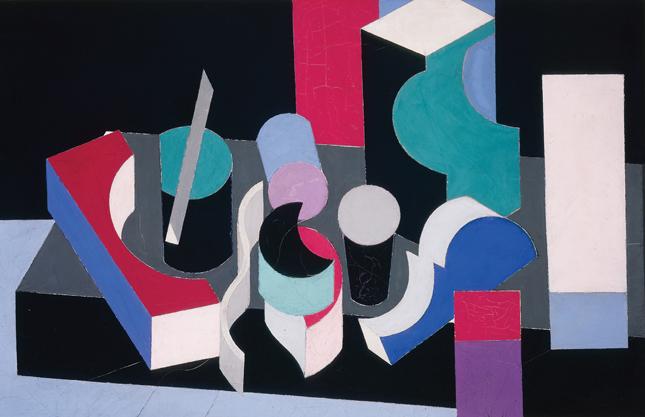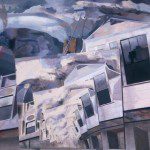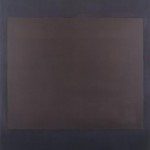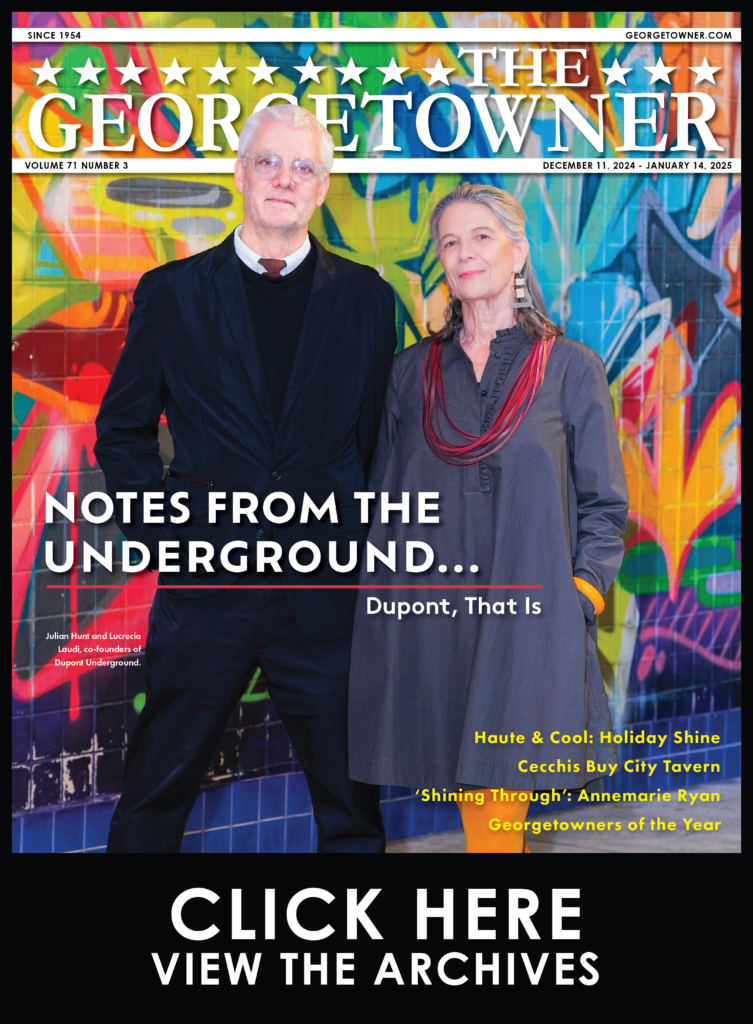What’s Red, White, Blue and Black: American Modernism and Rothko
By • July 26, 2011 0 2013

At the National Gallery of Art, early American Modernism from the Shein collection is featured on the first floor of the East Wing. The National Gallery does not have a strong showing of works from this critical period in American art, and the Shein collection will help fill in the gap. There are some very strong pieces here by major players, including Marsden Hartley, Georgia O’Keeffe, John Marin and Stuart Davis. But it is the lesser-known artists that can sometimes surprise.
One such surprise is Patrick Henry Bruce’s “Painting (Still Life)” that rivals a similar piece by Davis. In many ways I prefer the Bruce, which has a quiet energized classicism. Bruce’s “Painting” was completed in 1919, in the heat of the fray. Davis’ “Unfinished Business” was finished in 1962, toward the end of Davis’ career. Bruce was a much more important painter than Davis in 1919. He was a friend of Sonia and Robert Delaunay and possibly influenced the stark reductivism Matisse adopted in the ’30s for his large “Dance” murals. Unfortunately, Bruce, a descendant of Patrick Henry, killed himself in 1936. Though Davis achieved more and left a greater mark on American abstraction, Bruce deserves to be remembered.
I recall James Rosenquist remembering his teacher Edwin Dickinson, who said that the light was all off in New York studios, since north in New York City was not true north. If there is a northern light, it exists in Dickinson’s work, including “South Wellfleet Inn,” circa 1950-60. It is off every beaten track as a painting, coming close to a kind of obscurist realism. It is playful and morbid, like most of the work of Dickinson’s I have seen.
One cannot escape the fact that O’Keeffe’s “Dark Iris No. 2” and Hartley’s “Pre-War Pageant” eclipse most of the rest of the show, with the exception of Marin’s “Written Sea.” The Marin is one of the most restrained I have ever seen. It is more of a drawing than a painting, but masterful. The O’Keeffe and the Hartley are both at the center of their respective identities. O’Keeffe’s “Iris” is resplendently sensual. With Hartley, I quote Georgia O’Keeffe on his shows at Steichen’s gallery and say it’s “like a brass band in a small closet.”
Going into the tower where Matisse’s cutouts used to hang is now as Zen a place as I have been in D.C. It’s the home of several of Mark Rothko’s darkest work in as perfect an installation as possible. Somehow the off-rectangle of the tower with its high ceiling could not be a better setting.
The intermittent playing of Morton Feldman’s “Rothko Chapel” makes it complete. Feldman has written of his music that, “I envisioned an immobile procession not unlike the friezes on Greek temples.” A friend of mine recalled what Rothko said, on visiting a temple in Greece, “I’ve always been painting them, now I am in one.”
Darkness is not a metaphysical state much in favor these days. The medical industry is making huge amounts of money as a result. But facing darkness — and rendering it — is tough. Shostakovich did especially in his 14th and 15th quartets, as did Beethoven in his late quartets. In painting it is rarer. I recall Turner’s “Peace – Burial at Sea,” who, when he was questioned on the black sails he had painted, replied “I only wish I had any color to make them blacker.”
Reflecting on Rothko’s pictures, they do seem to me to bear some relation to Ad Reinhardt’s black paintings — though unlike Rothko, Reinhardt was ironic in his black pictures. Rothko is closer akin Gerard Manley Hopkins’ in his poem “Carrion Comfort”: “Of now done darkness I wretch lay wrestling with (my God!) my God.”
“American Modernism” runs through January 2, 2011.
- Patrick Henry Bruce, “Painting (Still Life),” c. 1919 | Collection of Deborah and Ed Shein




